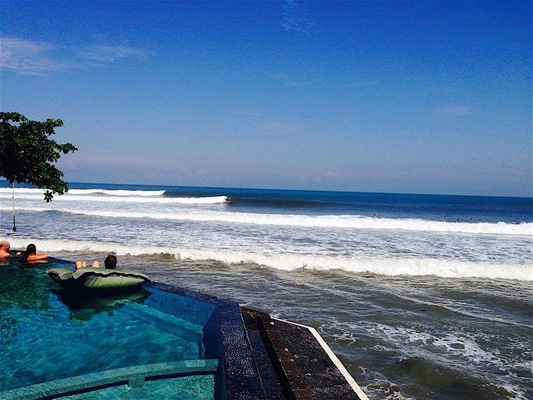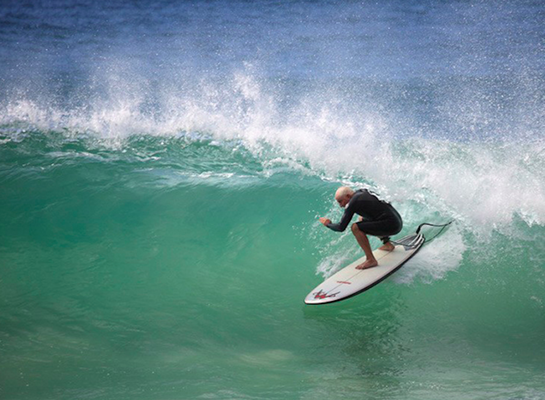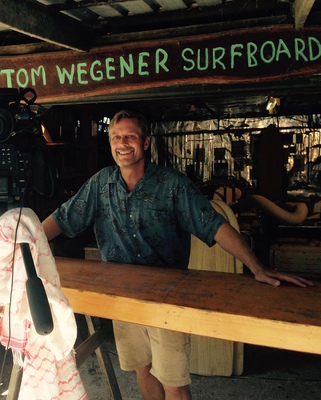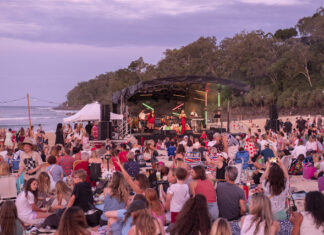
By Phil Jarratt
When I first got into the surf media, a long, long time ago, the idea of surfing in a singlet to perhaps win a trophy for your mantelpiece had all but disappeared, replaced by the contention that surfing was in fact an art form that could not be judged as a sport.
The protagonists of this viewpoint were known as “soul surfers” and generally sported bushranger beards and long matted hair and lived in sparsely-populated rural coastal towns, like Angourie, Lennox Head, Byron Bay and yes, even Noosa, where they could refine the art of surfing under the influence of home-grown dope. These were the true heroes of the surf media, and there were none bigger than Nat Young and Bob McTavish.
Respectively Australia’s greatest competitive surfer of the late 1960s and Australia’s most advanced surfboard designer of the same period, Nat and Bob were like the yin and yang of country soul, and as I wrote my first articles for the surf mags, I was inspired by their manifestos published in John Witzig’s Surf International magazine. “Look up through a crystal vessel,” Bob would write, “and get nailed to the wall”. “Simply by surfing,” Nat would preach, “we are supporting the revolution.”
But a funny thing happened on the way to the revolution: Nat went back to competition when money came into it, and Bob found religion of a more profound nature than soul surfing’s “church of the open sky”, a faith that has sustained him for more than 45 years. Bob’s particular brand of religion requires him to door-knock his shire every Saturday, offering the Word to those who answer. One day not long ago a new age hipster with long matted hair and a bushranger beard answered the door, and listened to Bob’s spiel as he took in the diminutive figure in late, late middle age.
“Hey man,” said the hipster, “I’m not really interested in your god because I’ve found my own in the ocean, looking out from the deep green cathedral of the barrel … ”
“Wait a minute, ya bastard,” yelled Bob. “That’s mine! I bloody wrote that!”
Once known as the “mayor of Noosa”, Bob is still one of the world’s leading surfer/shapers, responsible for revolutionising surfboard design in the 1960s, and for first popularising Noosa as a surfing destination. Now, 72, he remains the figurehead behind McTavish Surfboards in Byron Bay, a company that rode to success on the back of the longboard revival, but also produces some of the most innovative shortboards in the world. A loveable rogue despite his deeper side, Bob’s two surf memoirs, Stoked and More Stoked, have become bestsellers.
Representing a younger generation of soul surfers, American-born Tom Wegener, now in his fifties, was a solicitor in California until the surf bug bit him and he gave up his career to design surfboards and travel the world looking for waves. This search led him to Noosa in 1998, where he fell in love, started a family and made his home. Today, he is the most respected name in the world of sustainable wood surfboard production, has a PhD in sustainable technology and has published a well-received memoir, Surfboard Artisans: For The Love.
I’m looking forward to appearing with these two great characters and surfing thinkers at a session called, appropriately enough, “Soul Surfing”, as part of the Noosa Alive! Festival this month. The show will be held at the RACV Resort in Noosa from 6pm on Monday, 24 July, with a welcome beer or wine included in the price. At a small, intimate gathering, you won’t have a better opportunity to talk story with Bob and Tom, but tickets are in limited supply, so book yours online today at www.noosaalive.com.au
Gas week at Secret Spot
Well, it hasn’t actually been much of a secret for about 40 years, and with a fabulous new beachfront hotel now overlooking the break, the crowds are only going to get worse, but jeez we had fun on the long lefts of Medewi last week!
When I first surfed here in 1975, the Muslim villagers didn’t know what to make of us, or where to put us, but they soon overcame their shyness and built tiny homestays all over town, and that’s pretty much the way Medewi stayed, until recently. But the Bombora Medewi Surf Lodge is no monstrous resort, just 11 rooms set around a bar, a restaurant and a pool, all overlooking those fast-tracking walls that come racing down the point at high tide. Very tasteful, very tasty.
Exhausted and elated after a handful of sessions in the head-high to overhead range, I put the dual crowd issues – hot locals, visiting kooks – out of mind and booked my next stay as I finished the first.
Bombora’s not cheap, but I calculated as we drove back up the coast to home that it’d cost me about $12 a good wave, and I rate that as value.








